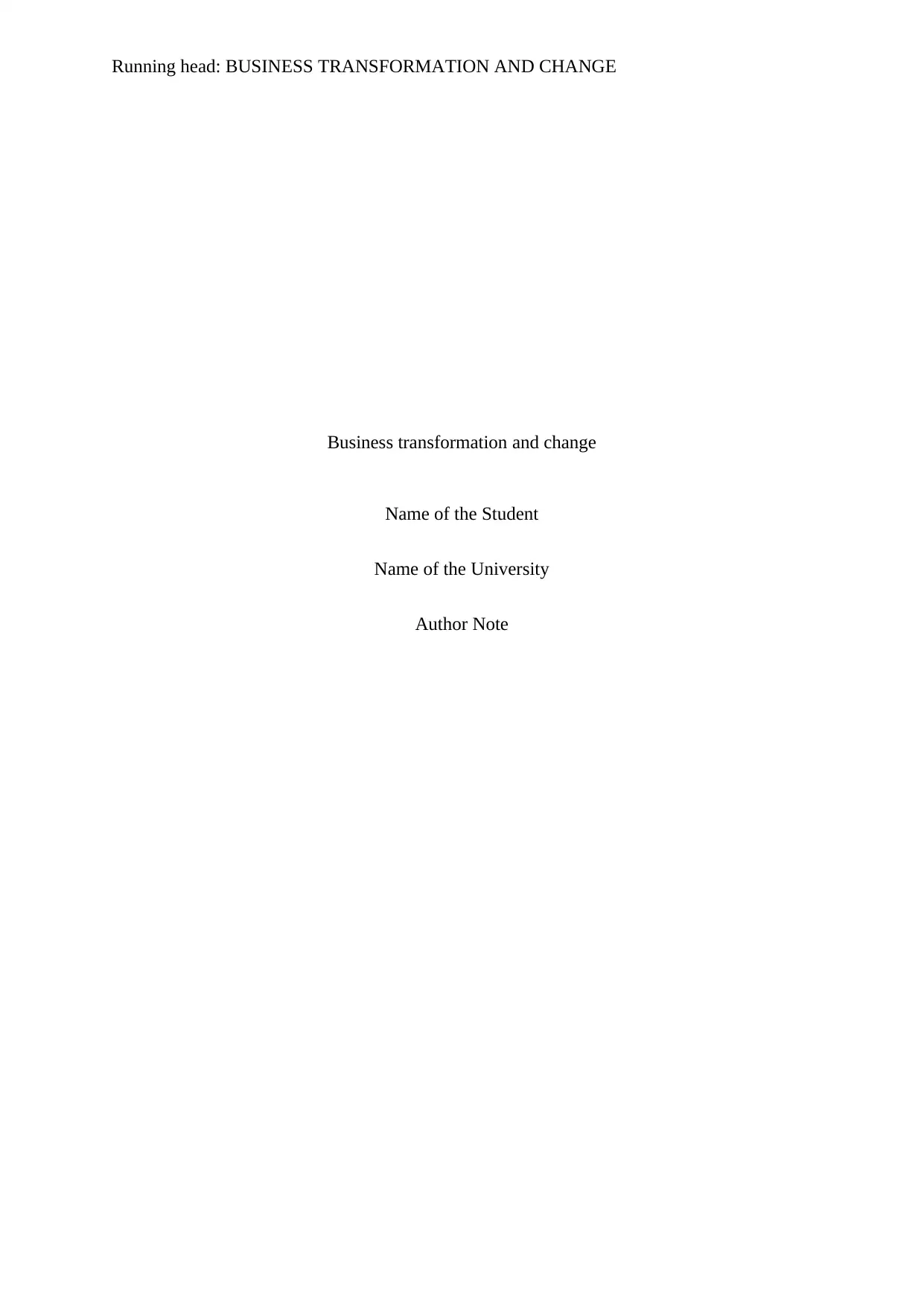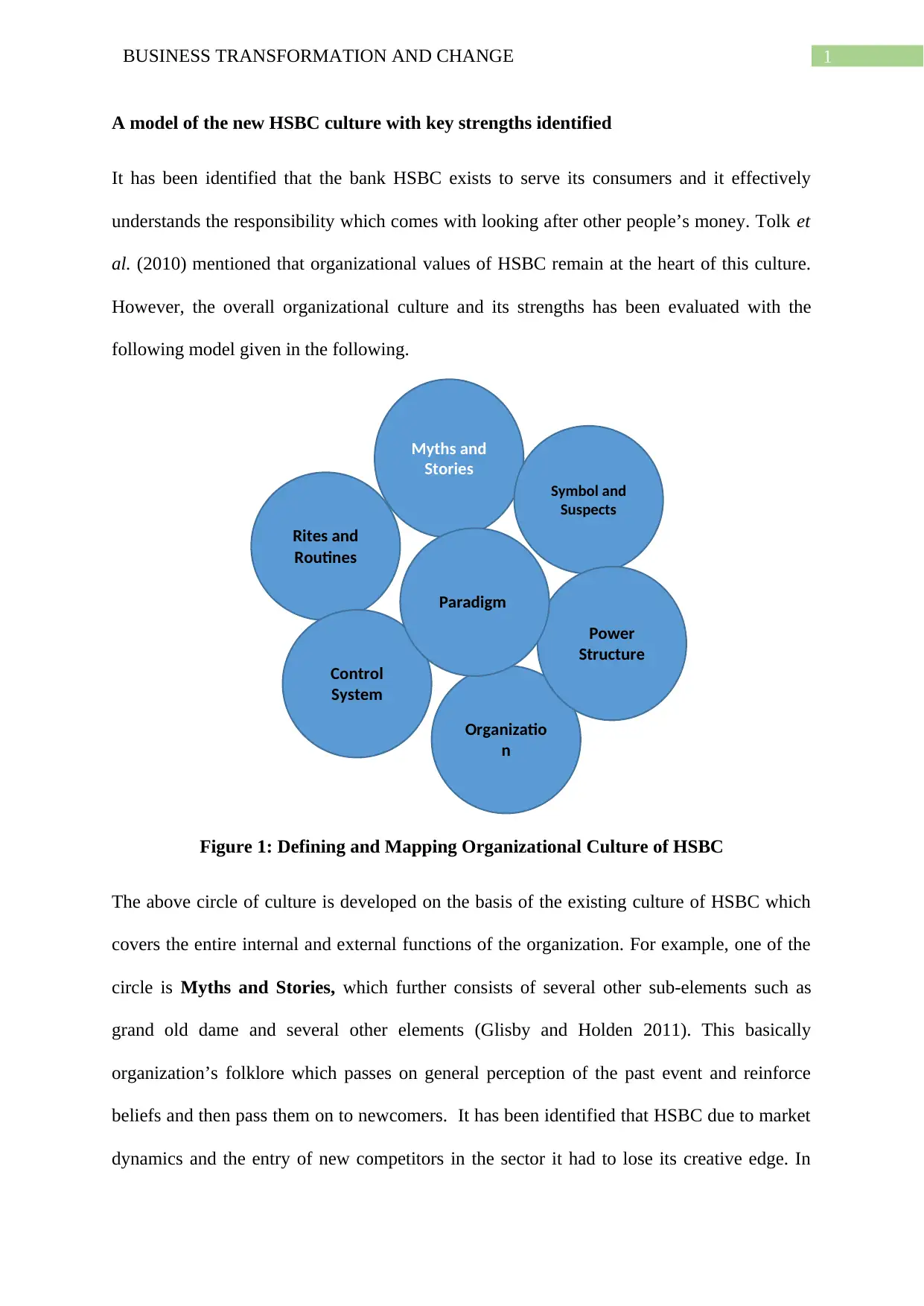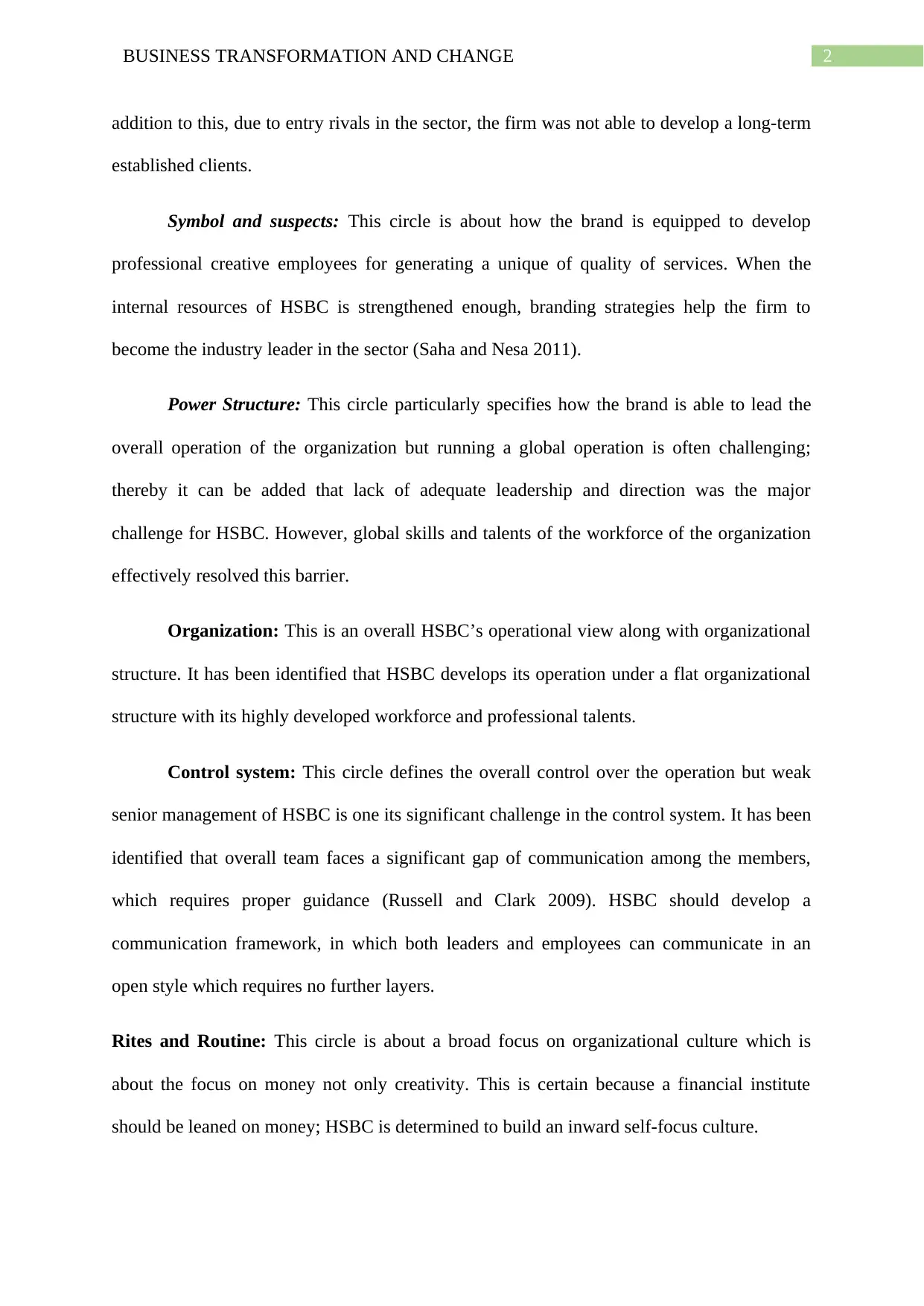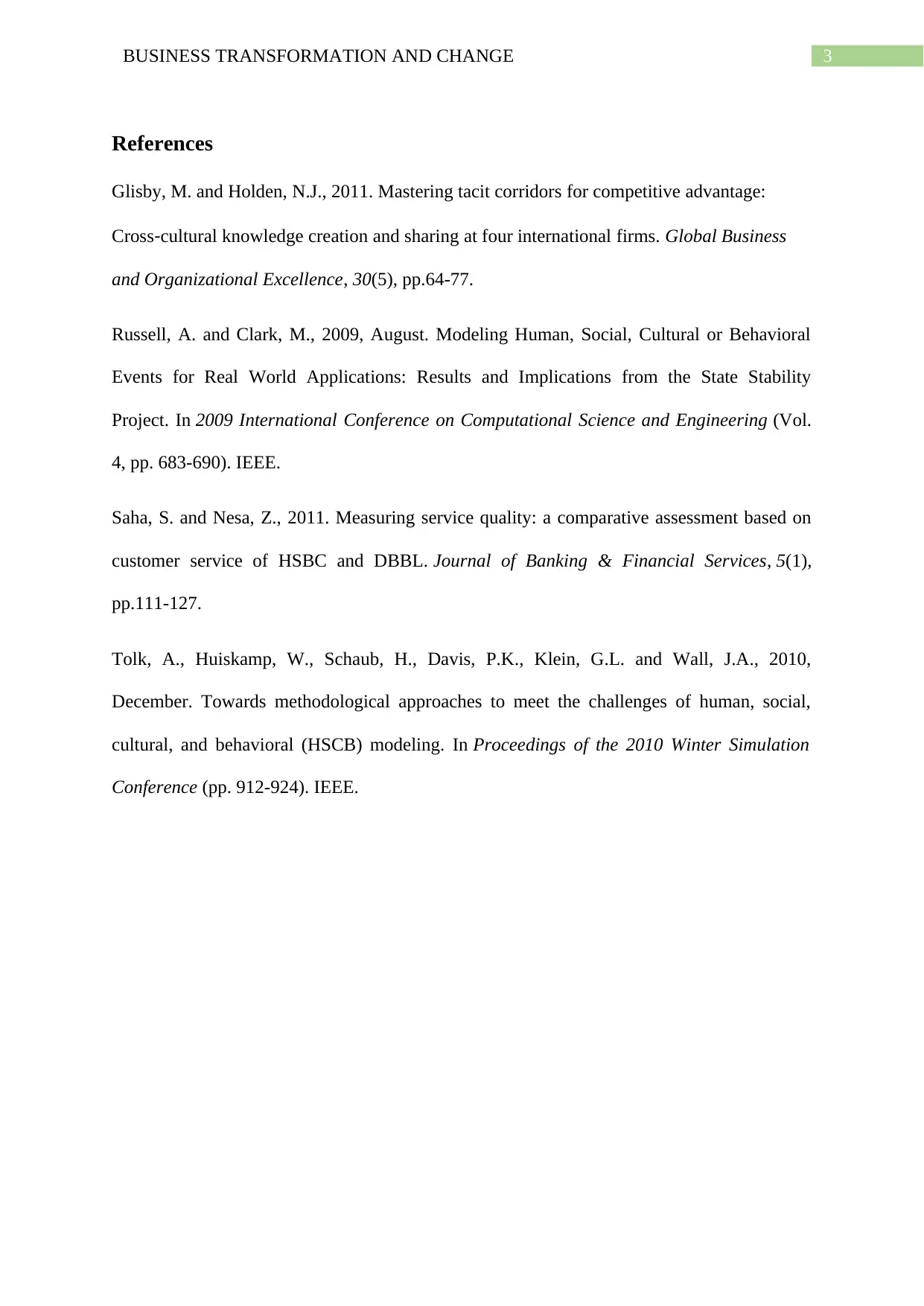Auckland International Campus: HSBC Business Transformation Analysis
VerifiedAdded on 2023/01/23
|4
|779
|47
Report
AI Summary
This report analyzes the organizational culture of HSBC, focusing on its strengths and weaknesses in the context of business transformation and change. The report begins by presenting a model of the new HSBC culture, identifying key strengths such as its understanding of customer responsibility and its organizational values. The analysis then delves into the components of the culture circle, including myths and stories, symbols and suspects, power structure, control systems, and rites and routines. It highlights challenges such as the loss of creative edge due to market dynamics and the need for improved communication within the organization. The report references several academic sources to support its findings and provides a comprehensive overview of HSBC's operational view and organizational structure, including its flat structure and the importance of its workforce's skills. The report also examines the challenges faced by HSBC in terms of leadership and control systems, emphasizing the need for an open communication framework. This analysis provides valuable insights into HSBC's journey of business transformation and change.
1 out of 4










![[object Object]](/_next/static/media/star-bottom.7253800d.svg)